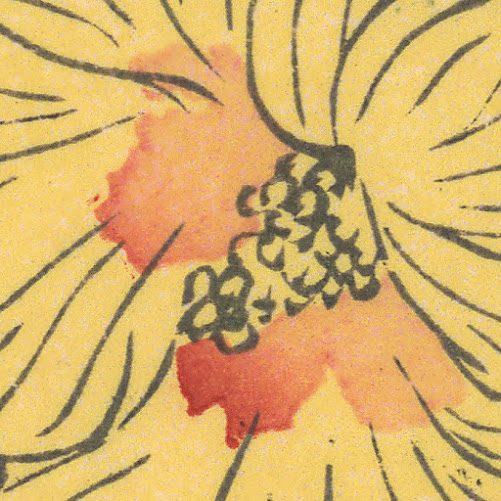Théophile Alexandre Steinlen
(1859–1923)
“Les
Soliloques du Pauvre” (The
Soliloquies of the Poor), 1895, proof impression of the cover to Jehan Rictus’
(aka Gabriel Randon) (1867–1933) poems, “Les Soliloques du Pauvre”, published
by the Société du "Mercure de France" in Paris in 1897 (see https://catalogue.bnf.fr/ark:/12148/cb312150546).
I understand that the advancing figure on
the right of the composition is the poet, Jenan Rictus—based on the Bibliothèque
nationale’s advice that Rictus (transl.) “was a great friend of Steinlen who
took inspiration from his silhouette to illustrate the most famous of his
works: ‘The Soliloques of the Poor’” (see cat. no. 13: https://archive.org/details/bnf-bpt6k65340400/page/n22/mode/1up).
Éditions Gallimard offers the following
insightful account of Jehan Rictus and this publication: (transl.) “Gabriel
Randon, known as Jehan-Rictus … had a difficult and conflicted childhood, he
left school around fourteen, lived in various small jobs and began to frequent
the milieu of artists and anarchists in Montmartre. Leading a precarious life,
homeless for a while, at twenty-two he frequented the world of tramps and
vagabonds, a crucial experience that would inspire him with the best of his
literary work. He was twenty-eight when he undertook to give voice to the
little people of the streets and the declassed in poems entirely written in his
language, Parisian slang. It will be The Soliloquies of the Poor which he made
known by saying them himself in the Montmartre cabarets, notably at the Chat
Noir. Unclassifiable book, without equivalent in the history of poetry, this
collection which knows an immediate success because of its lyrical force, its
oratorical power and its prosodic control is undoubtedly, after Villon and
before Prévert or Queneau, one of rare examples of a poetry that uses popular
language and in a certain way prefigures contemporary rap” (https://www.gallimard.fr/Catalogue/GALLIMARD/Poesie-Gallimard/Les-soliloques-du-pauvre-suivi-de-Le-coeur-populaire#).
Transfer lithograph printed in black on cream
wove paper (see https://emuseum.mfah.org/objects/2826/les-soliloques-du-pauvre).
Size: (sheet) 28 x 38 cm; (image
borderline) 20 x 32.3 cm.
Lettered in plate: “Jehan Rictus/ Les
Soliloques/ DuPauvre/ Dessins De/ Steinlen”.
Crauzat 579 (Ernest de Crauzat 1913, “L'oeuvre
gravé et lithographié de Steinlen”, Paris Société de propagation des livres
d'art, p. 156, cat. no. 579 [see https://archive.org/details/loeuvregravetl00crauuoft/page/156/mode/1up]).
Condition: a strong and well-printed
impression in a near pristine condition with no tears, holes, abrasions, stains
or foxing.
I am selling this proof impression of Steinlen’s famous lithograph designed for the cover of his friend’s book of
poems, for the total cost of AU$242 (currently US$164.68/EUR157.77/GBP136.20 at
the time of this listing) including Express Mail (EMS) postage and handling to
anywhere in the world, but not (of course) any import duties/taxes imposed by
some countries.
If you are interested in purchasing this graphically
strong original lithograph capturing a bleak view of Parisian life in Montmartre
towards the end of the nineteenth century, please contact me
(oz_jim@printsandprinciples.com) and I will send you a PayPal invoice to make
the payment easy.
This print has been sold






















































